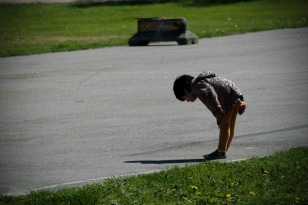Global Shadow Tracking
Learners

Global Shadow Tracking is a multi-age, science investigation and math, social studies, and language arts to a lesser extent. This lesson is intended for students in grade 3 (ages 7-9 in the United States). The activities outlined in this investigation relate to California Third Grade Science Standards, but may extend to other grades (older students) and with other grade level standards in California, other states, and countries. It helps for students to have learned about what a shadow is and how to make a shadow.
Prior to beginning this lesson the learner should:
Prior to beginning this lesson the learner should:
- Know how to work in collaborative groups.
- Identify the Sun as Earth's star.
- Understand the procedures for using a science notebook (or other method for recording observations and data).
- Know to use a ruler (for both metric and customary units).
- Know how to identify cardinal directions and intermediate directions (NE, NW, SE, SW), using a compass if possible.
- Know how to tell time.
- Know how to use an atlas or other reference to locate places on Earth.
Learners will need a basic understanding of how we describe locations on Earth using latitude and longitude coordinates, so that when they exchange data with learners around the world, they can predict and compare based on a knowledge of the latitudes of each of those other locations.
After measuring shadows and exchanging data, students should experience a demonstration of light hitting a globe to show how day and night occurs on Earth at different times in different places. (See the video referenced below for a demonstration.)
To get to the video:
1. Go to http://www.fossweb.com/CA/modules3-6/SunMoonandStars/index.html
2. Click on "Teacher Resources" at the lower left.
3. Click on the "Teacher Prep Videos" icon at the lower right.
4. Where you are allowed to select a chapter from the list, choose Investigation 1: Follow the Sun, Part 2 - Shadow Tracking.
Last updated on July 2, 2009. Based on a template from EDTEC 570 at SDSU
© Christina Lahr, Diane Main, and Karen McKelvey
After measuring shadows and exchanging data, students should experience a demonstration of light hitting a globe to show how day and night occurs on Earth at different times in different places. (See the video referenced below for a demonstration.)
To get to the video:
1. Go to http://www.fossweb.com/CA/modules3-6/SunMoonandStars/index.html
2. Click on "Teacher Resources" at the lower left.
3. Click on the "Teacher Prep Videos" icon at the lower right.
4. Where you are allowed to select a chapter from the list, choose Investigation 1: Follow the Sun, Part 2 - Shadow Tracking.
Last updated on July 2, 2009. Based on a template from EDTEC 570 at SDSU
© Christina Lahr, Diane Main, and Karen McKelvey